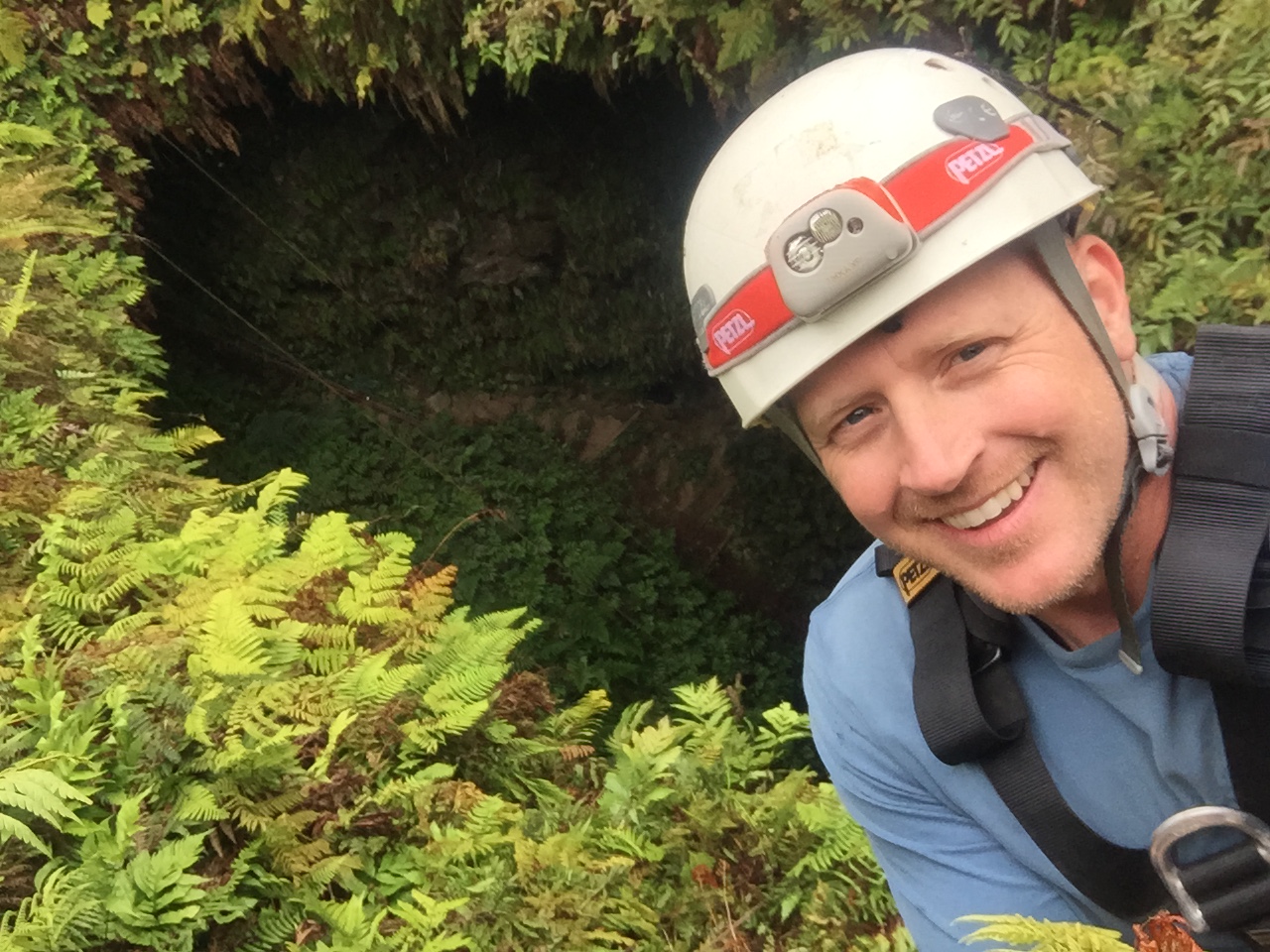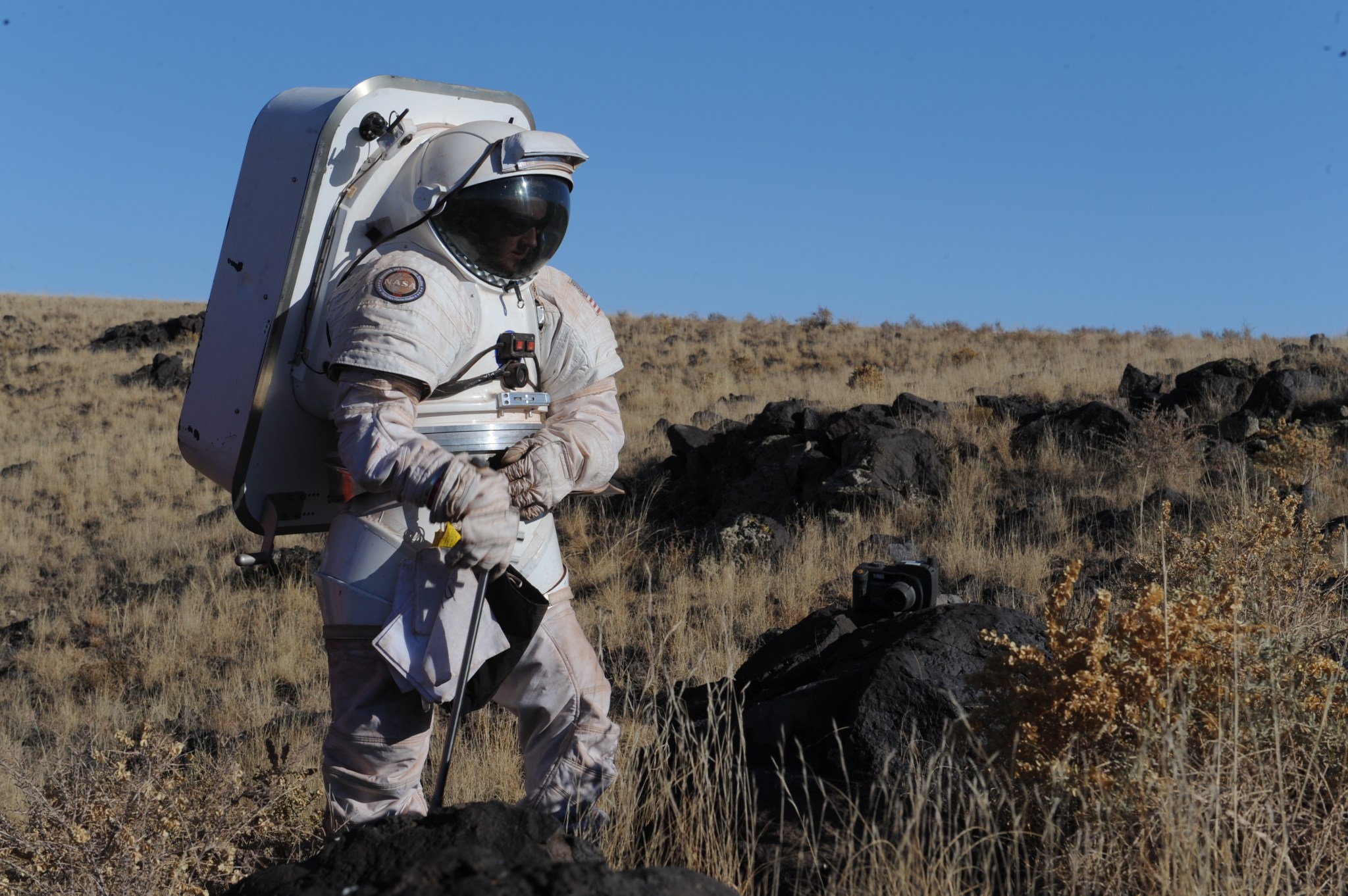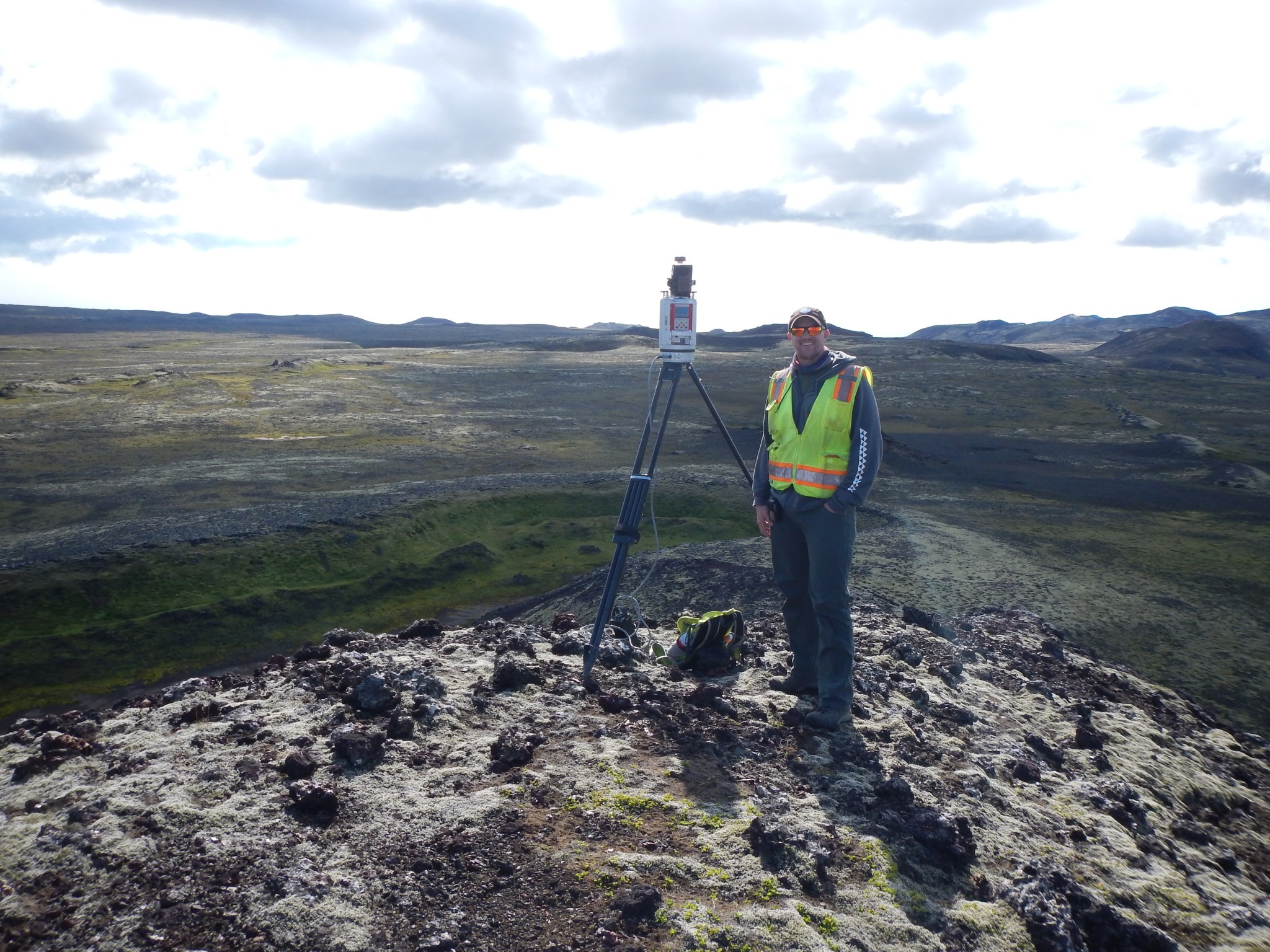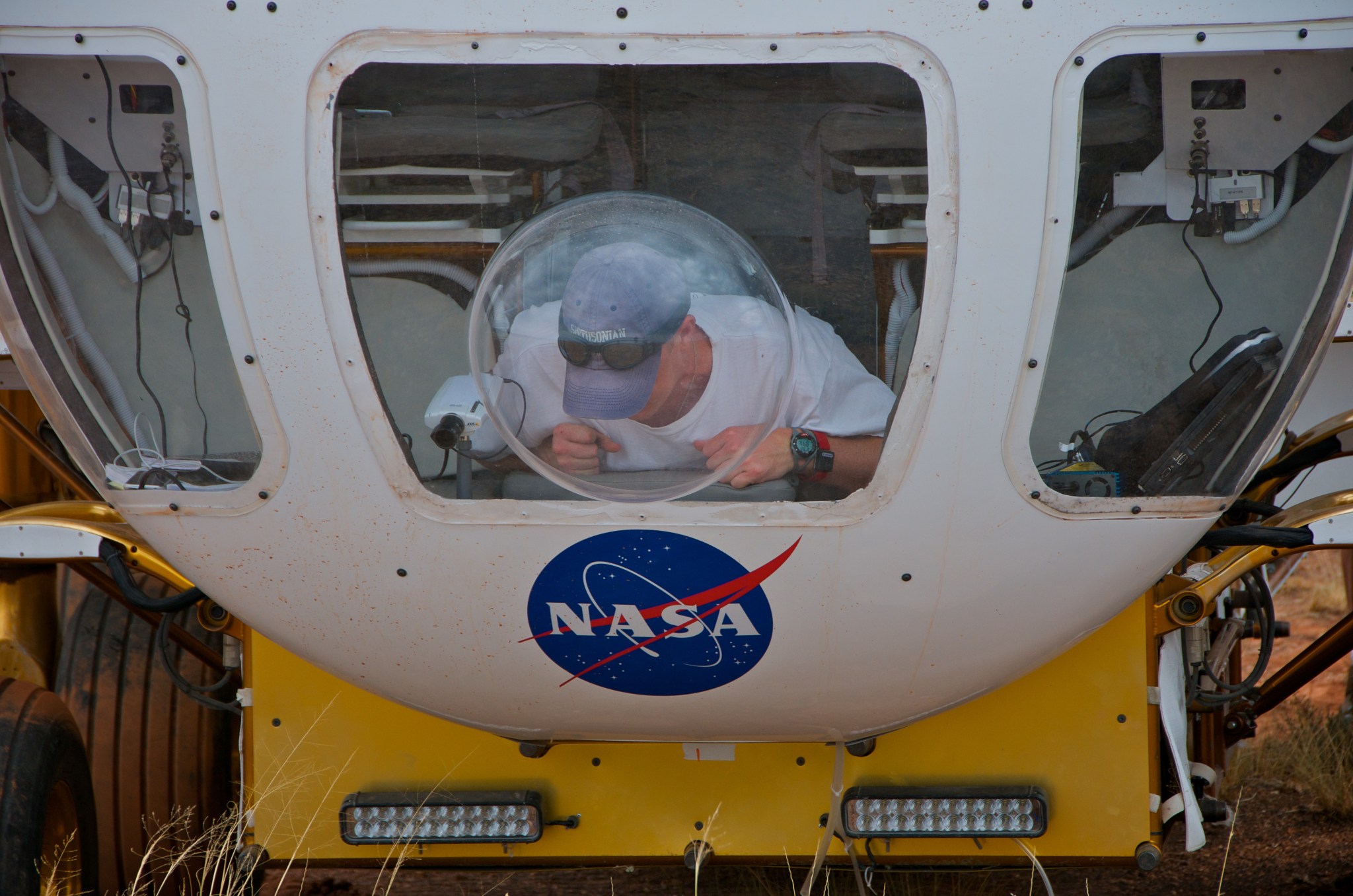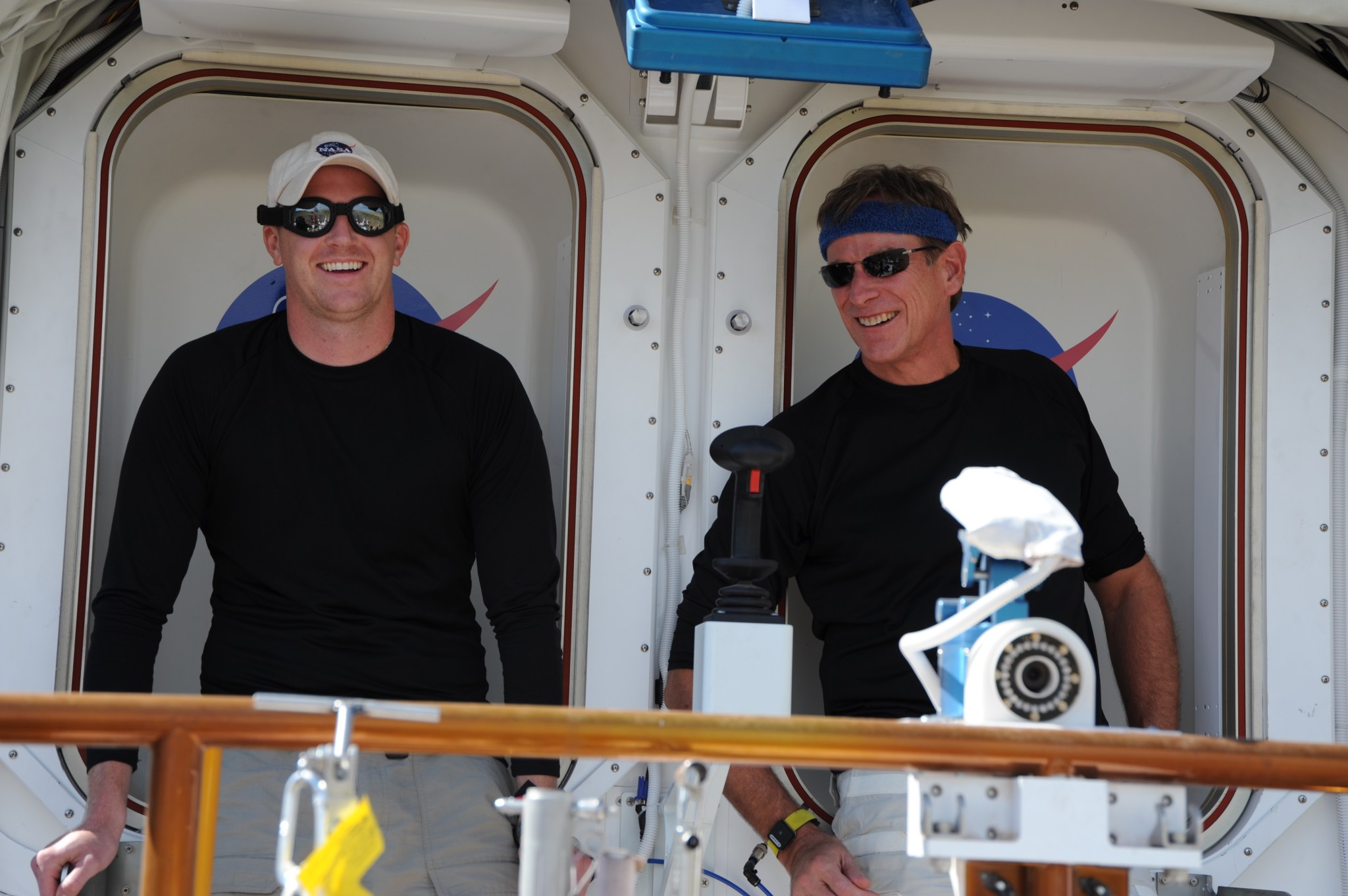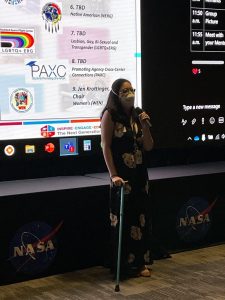Name: Brent Garry
Formal Job Classification: Geologist and volcanologist
Organization: Code 698; Geology, Geochemistry and Geophysics Laboratory; Sciences Directorate
What do you do and what is most interesting about your role here at Goddard? How do you help support Goddard’s mission?
I study volcanoes on Earth to better understand volcanism in our solar system. The most interesting part of my job is traveling to explore volcanoes all over the world that resemble places on the Moon and Mars to try to figure out the puzzle pieces that make up extraterrestrial volcanoes.
What did you want to do when you were a child?
I wanted to be an animator for Disney. I just loved cartoons and drawing.
How did a would-be animator become a geologist?
I grew up in Virginia and joined my older brother at The College of William and Mary. My artistic skills were never really at a level to be a Disney animator, so I was going to major in business. My sophomore year, I took three classes — astronomy, scuba diving and accounting — the combination of which made me realize that I wanted to go into geology. Once I graduated, I kept going and headed to the University of Kentucky for a master’s in geology and to the State University of New York at Buffalo for a doctorate in geology with an emphasis in volcanology.
I think volcanoes are the most exciting features on the planet. My art projects are now geologic maps of volcanoes.
What got you to Space Camp as an adult?
I loved the movie “Space Camp” as a kid, and since I never got to go to Space Camp when I was younger, I decided to work there one summer during college. I worked at the Space Camp in Huntsville, Alabama, as a camp counselor for middle school kids. I taught them about the history of the space program and trained them on simulations for shuttle missions. I loved everything about the experience from sitting in the cockpit of the shuttle simulators to eating an endless amount of astronaut ice cream. After that summer, I knew I wanted to work for NASA.
What was it like living in a rover with astronaut Mike Gernardt?
I did a post-doc at the Smithsonian Air and Space Museum and had a chance to join NASA’s Desert Research and Technology Studies team in 2008. We did field tests in Black Point lava flow near Flagstaff, Arizona, simulating Moon missions.
The first year, I spent three days living in the lunar exploration rover with Mike. The second year, I spent 14 days in the rover with Mike again. It was the ultimate “Field of Dreams” experience. We were testing new vehicles that could someday be used on the Moon, Mars and potentially asteroids. Luckily, when we went outside, we wore backpacks and our normal hiking gear and didn’t have to wear full spacesuits all the time, which got really warm.
Mike even let me drive the rover a few times. We used a giant joystick similar to what is used by fighter pilots. The rover can go forward, backward, spin in a circle, crawl sideways like a crab, lift up or lower down — it was crazy! But the very intricate suspension system made for a smooth ride.
At Goddard, how do you solve the puzzle pieces of volcanoes?
After the Smithsonian, I then went to work for Planetary Science Institute doing field geology all over the world — New Mexico, Iceland, Hawaii, Oregon, Idaho and other places. My work with the Lunar Reconnaissance Orbiter introduced me to people at Goddard. I have been at Goddard for about six years.
Volcanoes are made up of hundreds, if not thousands, of individual lava flows that all fit together into one, giant mountain. Smaller volcanoes can emerge overnight, but the larger shield volcanoes generally can take many thousands of years or even longer to build up over time. Lava flows exhibit many different shapes, forms and textures, from tubes similar to subway tunnels to giant rivers spreading across the surface. Each lava flow can be outlined on a map, essentially creating a puzzle piece.
To see how the different puzzle pieces actually formed, I sometimes go into the lava tubes or hike across large, rough lava flows. We use different instruments to document their shapes, sizes, and textures and compare what we see to higher resolution images of lava flows on the Moon and Mars.
One of my current projects is to map all the individual lava flows that create large shield volcanoes on the surface of Mars. I’m working on two geologic maps right now. One is a map of Arsia Mons and the other is Pavonis Mons, which are adjacent to each other on Mars. All the little shapes and features in the images are actually individual lava flows. From this, we can see what kinds of eruptions created these volcanoes.
It’s almost like we are making a puzzle. We have one, big image and then divide it up into the individual pieces of lava flows. Lava flows do not fit neatly together any more than do puzzle pieces.
Please tell us about doing field work in the Galapagos Islands.
The coolest place I went to for Goddard was the Galapagos Islands. They are desolate, untouched and very primitive. You feel like you have stepped back in time.
We explored a volcanic chamber and made a 3D model to understand how it formed. The BBC included our work in a subsequent special called “Mission: Galapagos.”
To me, the wildlife, especially the Galapagos tortoise, really puts the idea of perseverance into perspective. The tortoises were isolated on different islands and over time adapted to the unique terrain and plant life of each island to survive. Each island has a different type of tortoise. Some have longer necks, some have different shaped shells. It really made me think about how humans will have to adapt to survive for generations on Mars or elsewhere in our solar system.
Is working at Goddard an adventure?
Oh yes, it is definitely an adventure! My job at NASA allows me to go all over the world doing field work. I can keep my boots on the ground and at the same time look up to the sky, reaching out to the Moon and Mars. I feel like I have been lucky enough to have been in the right place at the right time for my experiences!
What adventures do you have in your free time?
While in college, my brother and I wanted to do a fun class together so we took scuba diving. To me, it felt like the closest to space I could ever get. It is so much fun floating underwater, seeing shipwrecks and coral reefs. It allows me to explore a whole new world.
I have gone shipwreck diving in the Great Lakes and diving with manta rays in Hawaii. For about six years, I volunteered at the National Aquarium in Baltimore, where I fed the sea turtles and the sting rays, plus made sure that the little fish got fed too.
I’ve even had a chance to go diving for my work at NASA! Scuba diving is one of the most space-like things you can do on Earth because you are totally reliant on your gear to survive.
Conversations With Goddard is a collection of Q&A profiles highlighting the breadth and depth of NASA’s Goddard Space Flight Center’s talented and diverse workforce. The Conversations have been published twice a month on average since May 2011. Read past editions on Goddard’s “Our People” webpage.
As a follow-on to Desert RATS, I had a chance to go scuba diving in Belize to simulate working on the Moon. I led a team of six to Carrie Bow Cay, an island smaller than a football field. We spent two weeks walking on the ocean floor collecting “rocks” and practicing other science tasks completed by the Apollo astronauts.
By Elizabeth M. Jarrell
NASA’s Goddard Space Flight Center, Greenbelt, Md.





























